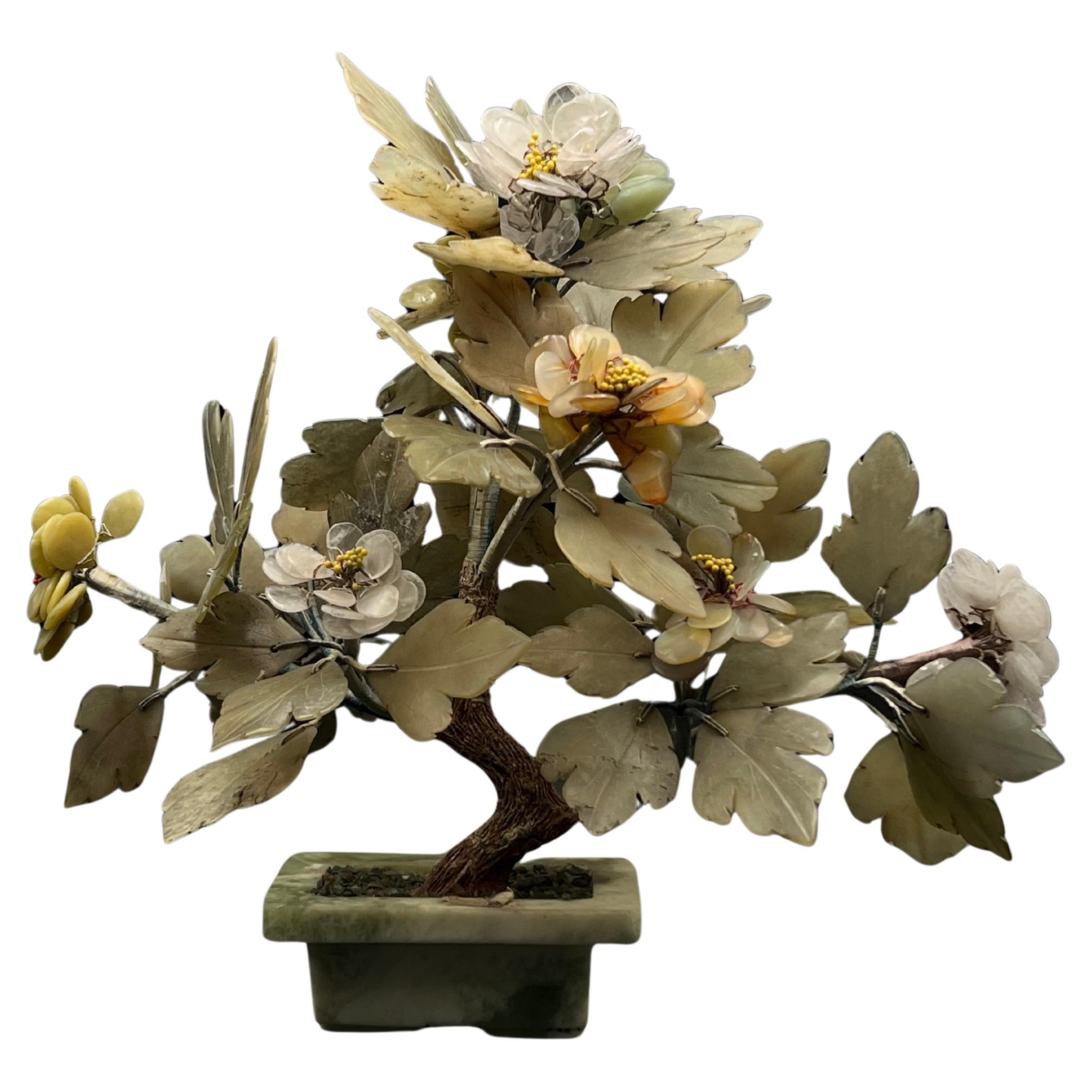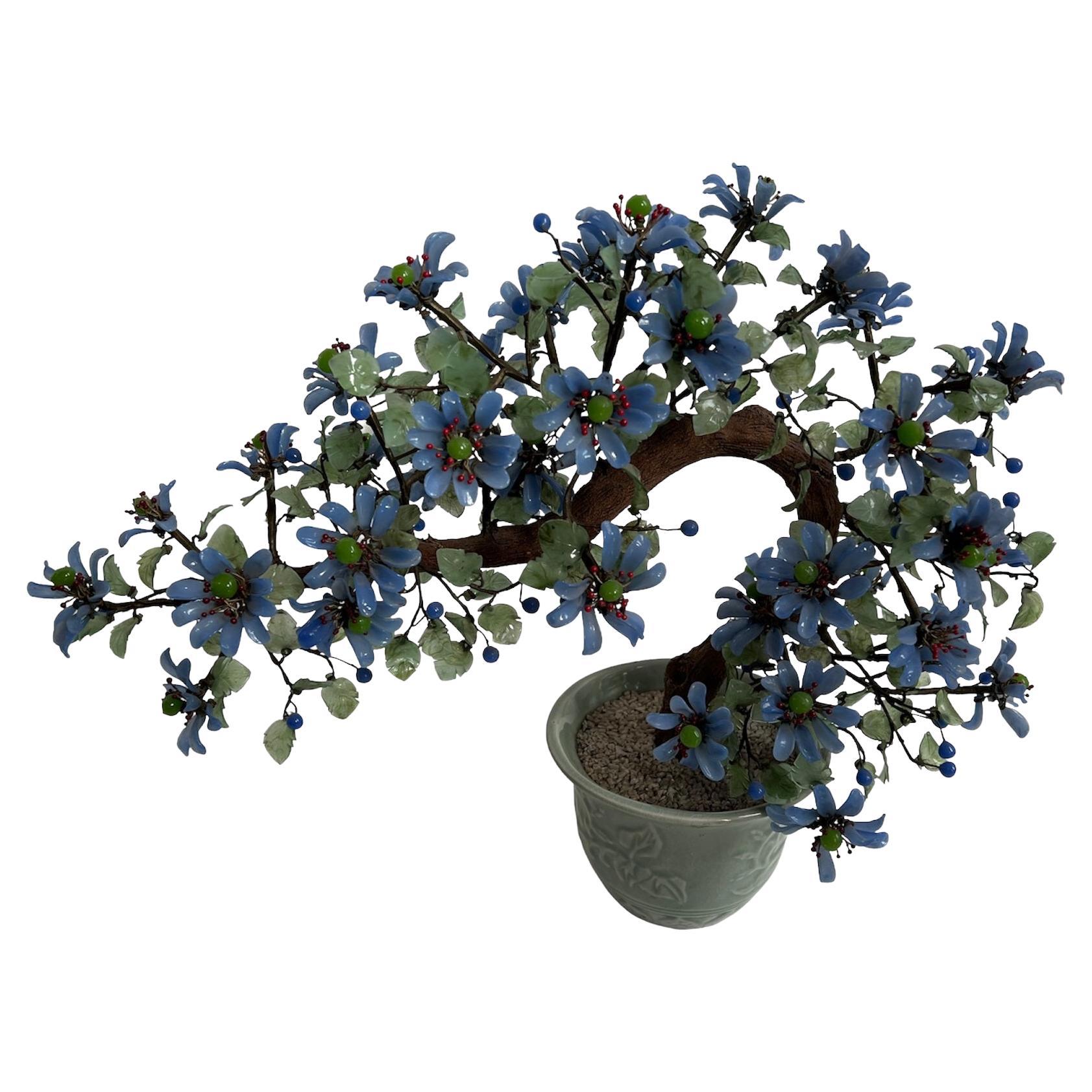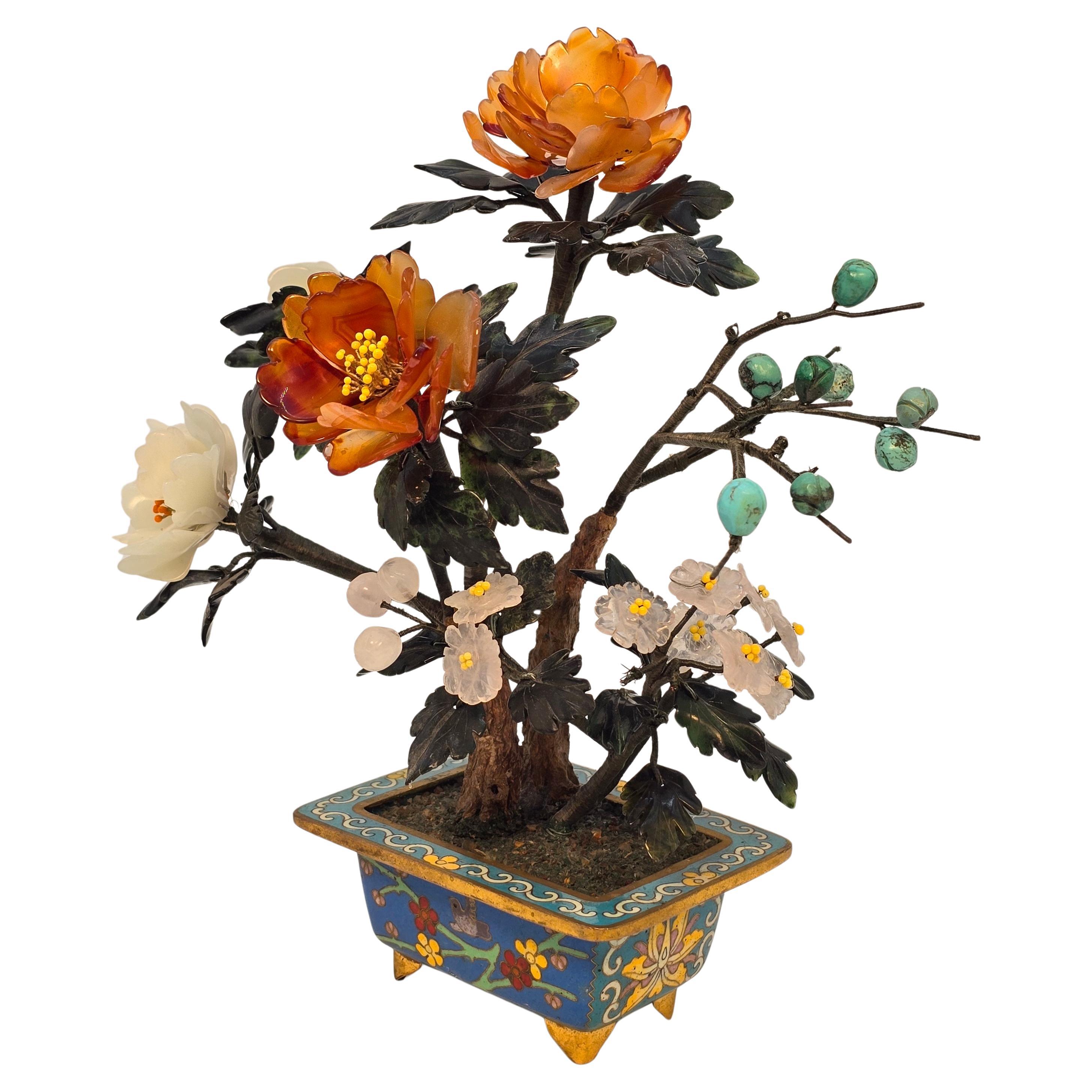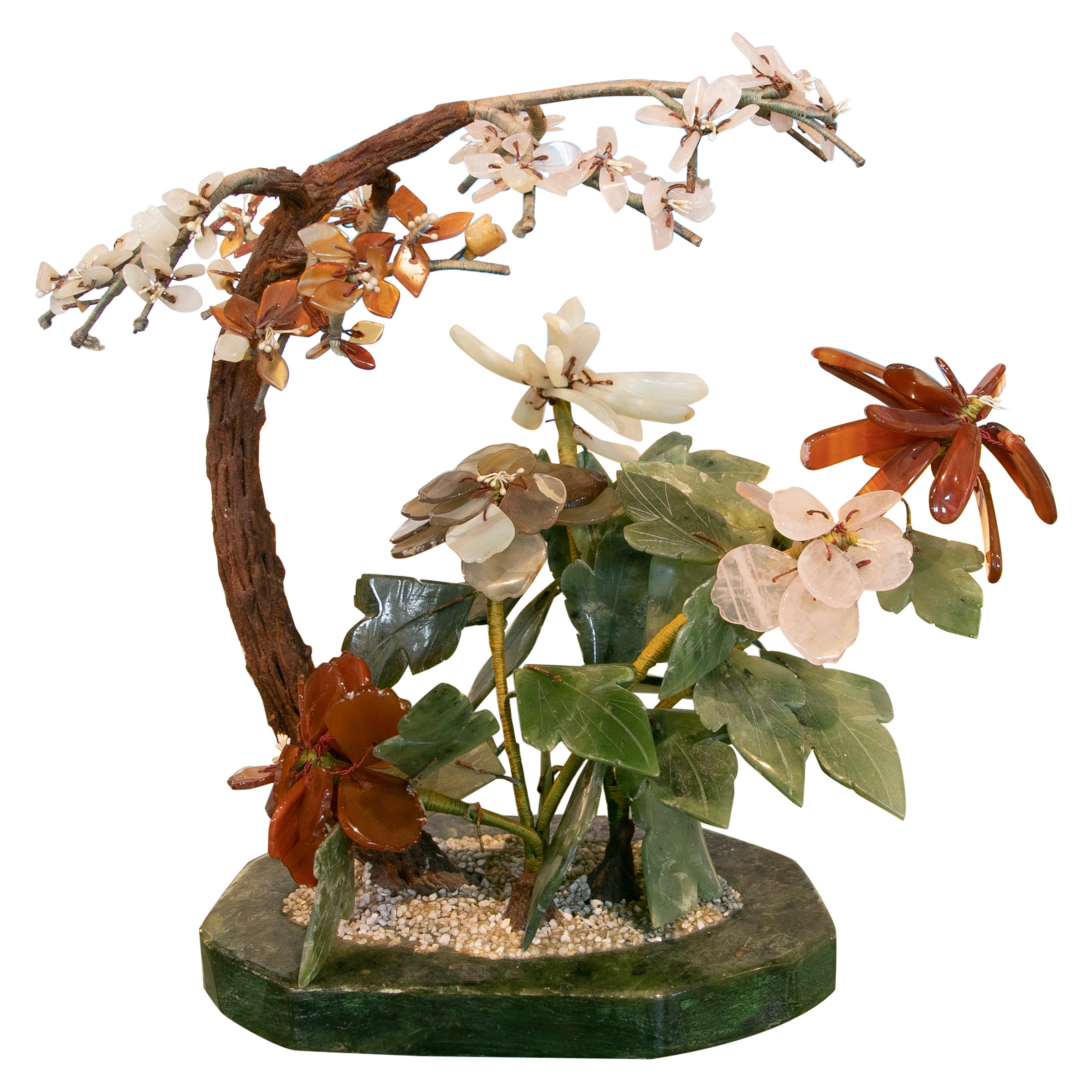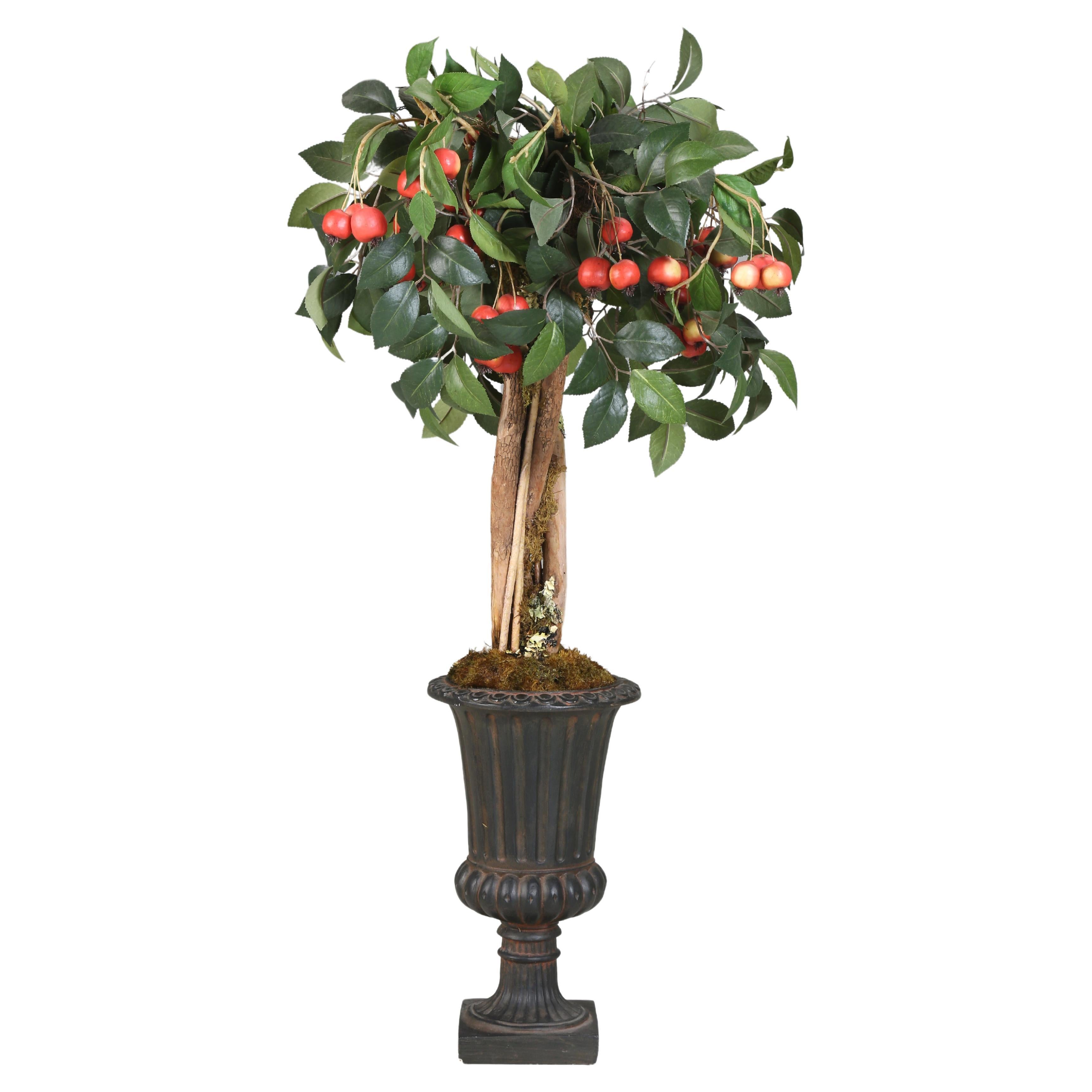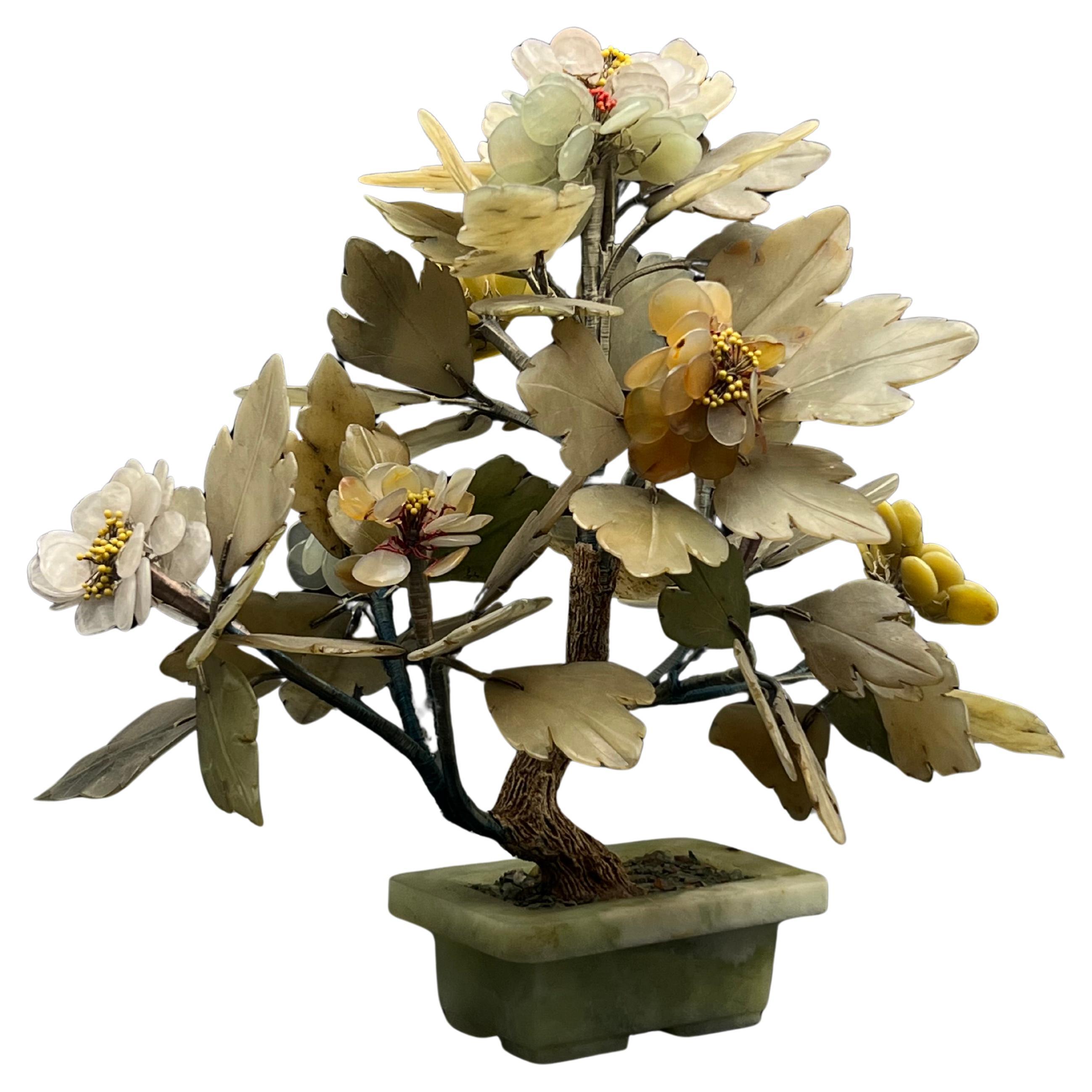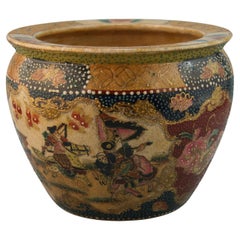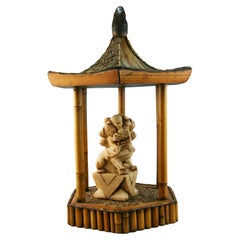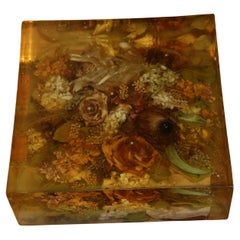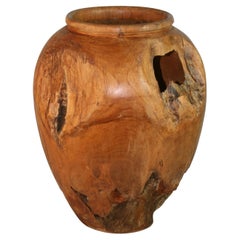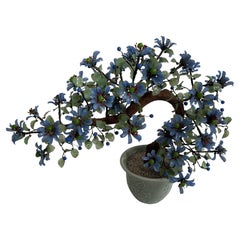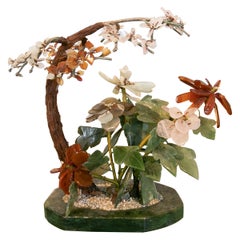Items Similar to Japanese Bonsai Flower Arrangement
Want more images or videos?
Request additional images or videos from the seller
1 of 19
Japanese Bonsai Flower Arrangement
$1,140
£859.67
€994.25
CA$1,599.41
A$1,777.85
CHF 931.91
MX$21,711.82
NOK 11,634.36
SEK 10,945.76
DKK 7,420.82
About the Item
1543 Japanese Bonsai flower arrangement in ceramic container.
Flowers are made of a fabric coated with a rubberized flexible substance.
Moss is covering the ceramic container.
Trunk is covered in the same rubberized substance
About the Seller
4.8
Platinum Seller
Premium sellers with a 4.7+ rating and 24-hour response times
Established in 1970
1stDibs seller since 2003
953 sales on 1stDibs
Typical response time: 1 hour
- ShippingRetrieving quote...Shipping from: Douglas Manor, NY
- Return Policy
Authenticity Guarantee
In the unlikely event there’s an issue with an item’s authenticity, contact us within 1 year for a full refund. DetailsMoney-Back Guarantee
If your item is not as described, is damaged in transit, or does not arrive, contact us within 7 days for a full refund. Details24-Hour Cancellation
You have a 24-hour grace period in which to reconsider your purchase, with no questions asked.Vetted Professional Sellers
Our world-class sellers must adhere to strict standards for service and quality, maintaining the integrity of our listings.Price-Match Guarantee
If you find that a seller listed the same item for a lower price elsewhere, we’ll match it.Trusted Global Delivery
Our best-in-class carrier network provides specialized shipping options worldwide, including custom delivery.More From This Seller
View AllJapanese Satsuma Vase
Located in Douglas Manor, NY
Japanese Satsuma hand decorated vase.
Category
Vintage 1920s Japanese Ceramics
Materials
Ceramic
Japanese Garden Bamboo Pagoda Shrine with Carved Stone Animal
Located in Douglas Manor, NY
Japanese bamboo Pagoda shrine with carved marble animal figure.
Category
Mid-20th Century Japanese Sculptures and Carvings
Materials
Marble
$960 Sale Price
52% Off
Italian Artpiece Table Sculpture Flowers Encased in Cast Resin
Located in Douglas Manor, NY
1695 Custom made table sculpture flowers encased in cast epoxy resin
Category
Vintage 1960s Natural Specimens
Materials
Epoxy Resin
Japanese Wabi Sabi Oversized Turned Urn from Solid Block of Wood
Located in Douglas Manor, NY
1390 Japanese Oversized turned hardwood urn.
Category
Vintage 1940s Urns
Materials
Hardwood
Japanese Dragon Vase
Located in Douglas Manor, NY
Japanese hand crafted glazed pottery dragon vase
Category
Early 20th Century Japanese Ceramics
Materials
Ceramic
Japanese Garden Planter Lamp, circa 1950
Located in Douglas Manor, NY
8-278 Japanese garden planter lamp made out of striated wood.
Lamp has on internal light in center tower with velum sides. Original braded lampshade
Original wiring in good conditi...
Category
Vintage 1950s Table Lamps
Materials
Plywood
$750 Sale Price
68% Off
You May Also Like
1 of 2, Chinese Jade Bonsai Tree with Jade Pot- No. 1
Located in Skien, NO
One of a pair No. 1 – Stunning Chinese handcrafted Bonsai Tree/Flower in white and green / gray white and green jade (for the leaves) and agate/hardstone (for the pink and yellow flo...
Category
20th Century Chinese Qing Scholar's Objects
Materials
Jade
Big Bonsai, Glass and Ceramic
Located in Ciudad Autónoma Buenos Aires, C
We have specialized in the sale of Art Deco and Art Nouveau and Vintage styles since 1982. If you have any questions we are at your disposal.
Pushing the button that reads 'View All From Seller'. And you can see more objects to the style for sale.
Why are there so many antiques in Argentina?
In the 1880 – 1940 there was a grate wave of immigration encouraged by the periods of war that were taking place.
1st World War took place between 1914 and 1918
2nd World War took place between 1939 and 1945
The immigrants options were New York or Buenos Aires. Tickets were cheap and in Buenos Aires they were welcomed with open arms, as it was a country where everything was still to be done.
Argentina was the country of new opportunities, labour was needed and religious freedom was assured, in many cases the of the family travel first until they were settled and then the rest of the family members join them.
In the immigrant museum “Ellis Island Immigrant Building” in New York you can se the promotional posters of the boats that would take them to a new life.
Between the years 1895 and 1896, Argentina had the highest DGP (gross domestic product) per capita in the world according to the Maddison Historical Statistics index, this situation arose due to the large amount of food being exported to European countries, which were at war.
The Argentinean ships left the port of Buenos Aires with food, but they returned with furniture, clothes and construction elements, (it´s common to see this the old buildings of the historic neighbourhood of San Telmo, the beams with the inscription “Made in England)”, as well as many markets that were built in Buenos Aires, such us the San Telmo Market, whose structure was brought by ship and afterwards assembled in 900 Defensa Street.
With the great influence of European immigrants living in the country, the children of the upper classes travelled to study in France, resulting in the inauguration of “La Maison Argentinienne”, on 27th of June 1928, in the international city of Paris, which hosted many Argentinians that were studying in Frace.
It´s the fourth house to be built after France, Canada and Belgium, being the first Spanish-speaking one. Still in place today (17 Bd Jourdan, 75014, Paris, France). Many of the children of these wealthy families who attended international art exhibitions, museums and art courses abroad, took a keen interest in the European style. This is why Buenos Aires was at the time referred as “The Paris of South America”.
Between the years 1890 and 1920 more than a hundred Palaces were built on Alvear Avenue the most exclusive avenue in Buenos Aires. Today some of these palaces have been transformed into museums, hotels and embassies.
In the year 1936, the Kavanagh building was inaugurated, it was the tallest reinforced concrete building in South America.
During 1994 the American Society of Civil Engineers distinguished it as an “international engineering milestone”, and it´s now considered a World Heritage of Modern Architecture.
At the time was common to hire foreign architects such as Le Corbusier, who visited Buenos Aires/Argentina in 1929 and in 1948 he drew up the blueprints for a house built in La Plata City (which was declared a World Heritage Site).
In 1947, the Hungarian architect Marcelo Breuer designed “Parador Ariston” in the seaside city of Mar del Plata. After an Argentinean student at Harvard University convinced him to come to Argentina. He worked on an urban development project in the Casa Amarilla, area of La Boca.
The Ukrainian architect, Vladimiro Acosta, arrives in Argentina in 1928 and worked as an architect until que moved to Brazil.
Antonio Bonet, a Spanish architect who worked with Le Corbusier in Paris, arrives in Argentina in 1937, where he carried out several architectural works and in 1938 designs the well-known BFK chair.
Andres Kálnay, of Hungarian origin, made around 120 architectural masterpieces, among which the former Munich brewery stands out, he even made the furniture’s design.
The German architect, Walter Gropius, director of the Bauhaus, lived in Argentina, where he wrote articles for “Sur” magazine and founded in Buenos Aires, an architectural firm with Franz Möller, who was also an architect, where he built two houses.
At the same time several famous designers decided to immigrate to Argentina, among them we can find the well-known French designer, Jean-Michel Frank, who arrived in the country in 1940 and also worked for the Rockefeller family.
Special pieces were made, which were sold exclusively in the country, such as the well-known German company “WMF”, who sold their products by catalogue, which were chosen by the ladies of High Society in the list of wedding gifts, as well as the pieces designed by Christofle.
The Swiss sculptor Alberto Giacometti, made special pieces for Argentinean mansions.
In 1904 the first Jansen branch outside Paris was established in Buenos Aires, as the Argentinean clientele demanded a large amount of furniture, from the end of the 19th Century to the mid-20th Century.
In 1970, the brand Rigolleau Argentina made pieces authorised by Lalique.
The brands Maple and Thompson also set up shop in the country.
The French plastic artist, Marcel Duchamp moved to Argentina in 1918-1919.
Glass signed Gallé, Charder, Leverre, Schneider, Muller and other French firms. They were bought in flower shops and were given to ladies with beautiful floral arrangements.
Some furniture manufacturers travelled to international fairs and bough the patterns to produce the furniture in Argentina, such as the furniture firm Englander and Bonta, who bought the patterns ins Italy.
It is worth mentioning that in Argentina we have the largest Community of Italians outside...
Category
Vintage 1980s Japanese Mid-Century Modern Planters, Cachepots and Jardin...
Materials
Art Glass, Ceramic
Chinese cloisonné and mixed carved hardstone flowering bonsai tree.
Located in Central England, GB
This small beautiful jewel like piece of Chinese fine art is a very pleasing ornamental bonsai tree.
The tree stands in a brightly coloured cloisonne enamelled shallow pot which is ...
Category
20th Century Chinese Chinese Export Ceramics
Materials
Agate, Jade, Quartz
Bonsai Sculpture Made of Hand Carved Hard Stones and Wooden Base
Located in Marbella, ES
Bonsai Sculpture Made of Hand Carved Hard Stones and Wooden Basel.
Category
Vintage 1980s Spanish Figurative Sculptures
Materials
Stone
Artificial Floral Arrangement Hand-Made and Very Realistic
Located in Chicago, IL
Beautiful Artificial Floral Arrangement that we first purchased to be used in the showroom as a table centerpiece. While we were doing some well deserved cleaning in our storage faci...
Category
1990s Italian Centerpieces
Materials
Other
No.2 of 2, Chinese Jade Bonsai Tree with Jade Pot
Located in Skien, NO
One of a pair No. 2– Stunning Chinese handcrafted Bonsai Tree/Flower in white and green / gray white and green jade (for the leaves) and agate/hardstone (for the pink and yellow flow...
Category
20th Century Chinese Qing Scholar's Objects
Materials
Jade
More Ways To Browse
Ceramic Containers
Vintage 1940s Japanese
Japanese Containers
Flower Trunk
Vintage Flower Containers
Vintage Ceramic Containers
Japanese Bonsai
Bonsai Planter
Chinese Blue And White Jardiniere
Chinese Blue White Jardiniere
Porcelain Fish Bowl
Rectangular Cachepot
Large Blue And White Jardiniere
Antique Dutch Planter
Silver Plated Jardinieres
Sevres Jardiniere
Cachepot Turquoise
Chinese Bronze Pot
